The largest Launchpool in Binance history, Saga, is about to go live
Author: John
Editor: Daniu
According to a share from Shijian Niubi (niubite.com), on April 6, Binance's new token mining project Saga announced on platform X that over $13 billion in funds had participated in staking mining within 24 hours, making SAGA the largest Launchpool in Binance's history.
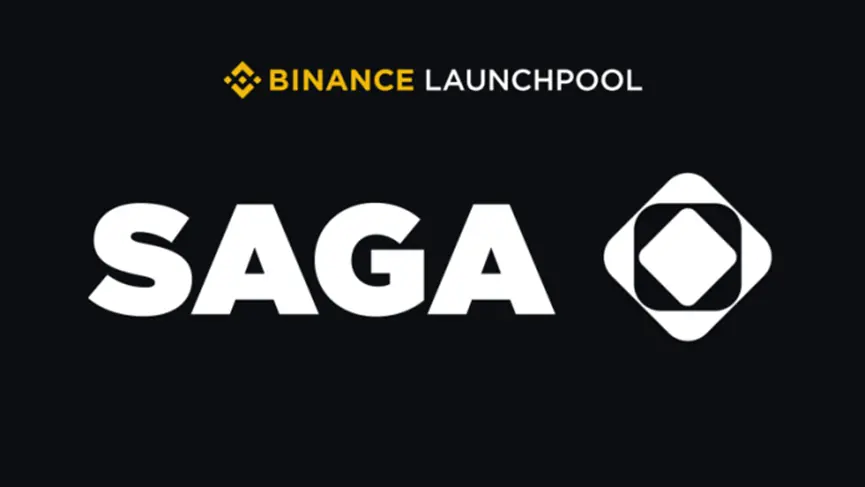
So, what exactly does Saga do? What unique features does it have?
1. What is Saga
In a nutshell: Saga is a modular one-click chain launch platform for the gaming sector based on Cosmos.
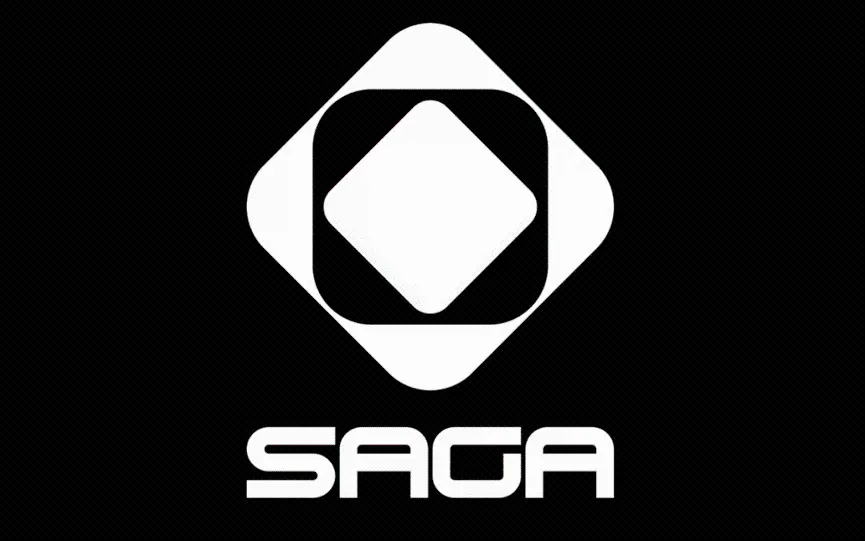
Do you remember why dYdX migrated from Ethereum to the Cosmos ecosystem?
The reason dYdX migrated to the Cosmos ecosystem, aside from scalability and gas fees, was mainly due to gaining more autonomy.
Because dYdX transformed from a DApp in the Ethereum ecosystem into a Layer1 chain, namely dYdX Chain, a DApp application upgraded to a chain, it gained more autonomy, such as building its own nodes and using its own platform token as the gas fee payment token, and even establishing its own ecosystem.
Now back to Saga, it is a Layer1 protocol developed based on Cosmos. It allows developers to create dedicated chains—"Chainlets"—that are suitable for different virtual machines, parallel, and interoperable, providing infinite scalability for applications.
In simple terms, Saga is a Layer1 protocol that implements one-click chain launch functionality, allowing for the rapid establishment of a dedicated chain, which is Chainlets.
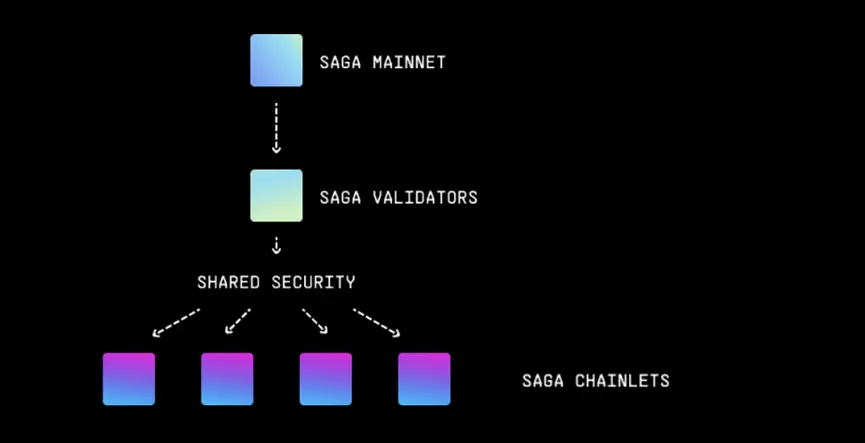
Each Chainlet has the same validator set and security model as the Saga mainnet.
What unique features do Chainlets have compared to other common chains?
2. Unique Features of Chainlets
The main features of Chainlets built on the Saga mainnet include:
1. Unlimited Horizontal Scalability
All Chainlets operate in parallel, avoiding the competition for Ethereum network resources that DApps in the Ethereum ecosystem face, which can lead to extremely high gas fees and very slow transaction confirmation times during peak periods.
Moreover, since these Chainlets run in parallel, Saga allows them to elastically scale to their peak performance and speed.
2. Freedom to Choose Payment Models
It is well-known that DApps in a public chain ecosystem often face restrictions when paying gas fees, generally being forced to use the public chain platform token instead of their own token.
As a result, most of the value generated by the DApp's development is captured by the public chain platform token rather than by the DApp's own token.
However, in the Saga ecosystem, these Chainlets can freely choose the token used to pay gas (or for other purposes) and do not need to use SAGA as the gas payment token. For example, they can choose their own platform token, stablecoins, fiat currency, or even tokens from another ecosystem.
In other words, SAGA's payment model is different from other public chains; users do not need to pay network fees directly, and project parties (Chainlets) can decide their own charging methods (such as subscription, buyout, advertising fees, or even completely free).
Additionally, SAGA employs a unique "musical chairs pricing" mechanism, which can be simply understood as: different validators internally bid against each other to lower block confirmation costs, leading to continuous competition among different validators to maximize the reduction of block fees.
3. Automation
Developers only need to click a button in the Saga WebApp to establish a Chainlet.
4. Interoperability and Fast Bridging
In the Saga ecosystem, not only can Chainlets and Saga interact automatically, but different Chainlets can also interoperate automatically, such as quickly transferring assets.
Furthermore, since each Chainlet provides fast transaction finality, users can take advantage of quick bridging to other chains.
5. High Autonomy
In the Saga ecosystem, developers can enjoy their own dedicated chain; each Chainlet is a proprietary chain, allowing project parties to customize functions according to their specific business needs, whereas developing a DApp on a public chain often comes with many restrictions.
3. Financing
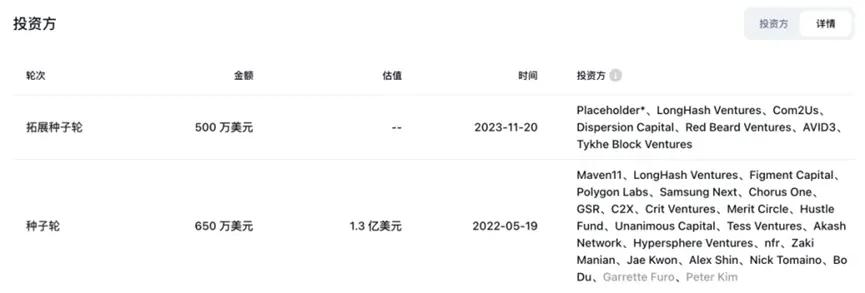
According to data from the rootdata platform, Saga has raised a total of $11.5 million through seed rounds and extended seed rounds.
Among them, on May 19, 2022, it raised $6.5 million at a valuation of $130 million.
The most recent financing occurred on November 20, 2023, where it raised $5 million.

Investors include Placeholder, Maven11, Longhash, Samsung, Com2uS, Polygon, Merit Circle, Figment, and others.
4. Ecosystem Development
Since its launch at the end of March 2022, Saga has seen over 350 projects in its ecosystem after two years.
(Complete list: https://www.saga.xyz/innovators).
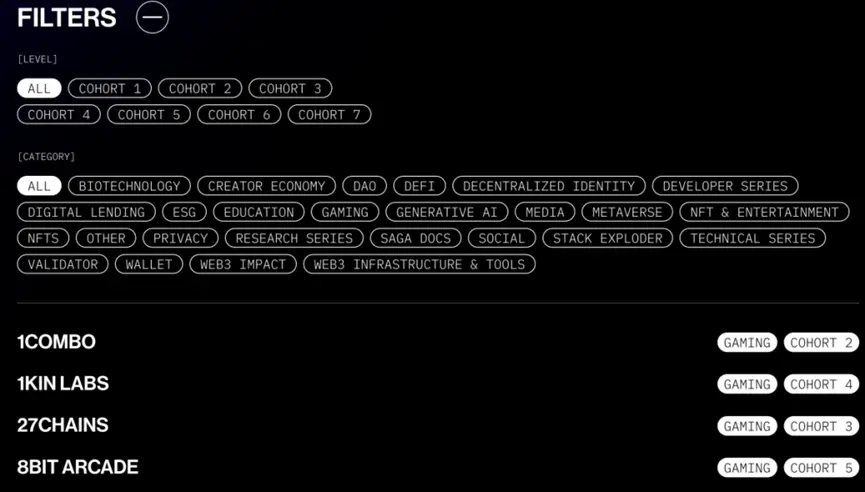
Among these over 350 projects, 80% are gaming projects, 10% are in NFTs and entertainment, and the remaining 10% belong to DeFi projects. Therefore, Saga is also referred to as a modular one-click chain launch platform for the gaming sector.
Additionally, Saga has established partnerships with Polygon, Avalanche, MarbleX, Com2uS, and Celestia to automatically expand its infrastructure using Chainlets:
Polygon: Saga will automate the Polygon CDK chain;
Avalanche: Saga will automate the Avalanche subnet;
Celestia: Saga will automatically perform decentralized aggregation with Celestia DA;
MarbleX: Saga will provide expanded infrastructure for the MarbleX chain;
Com2uS: Saga will provide expanded infrastructure for the Com2uS chain.
5. Token
The total supply of Saga tokens is 1 billion, of which the ecosystem and development fund, foundation reserves, core contributors, and investors account for 80%.
Additionally, Binance Launchpad accounts for 4.5%, and airdrops account for 15.5%.
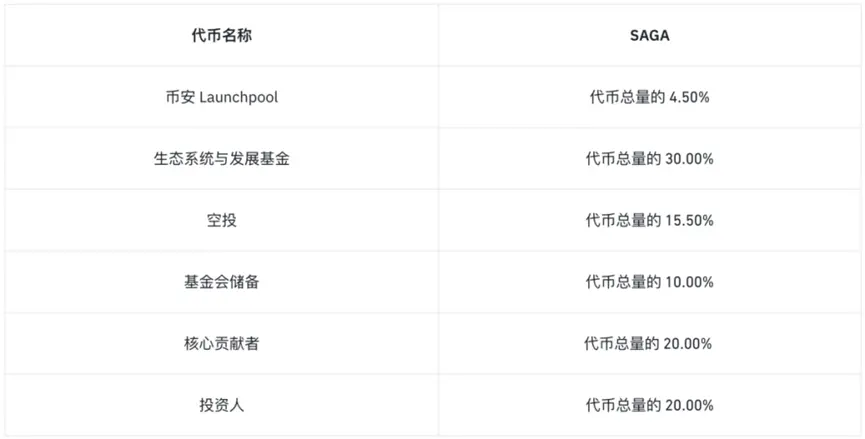
The initial circulation of SAGA is 90 million tokens, which means the initial circulation is only 9%, indicating a relatively small circulation.
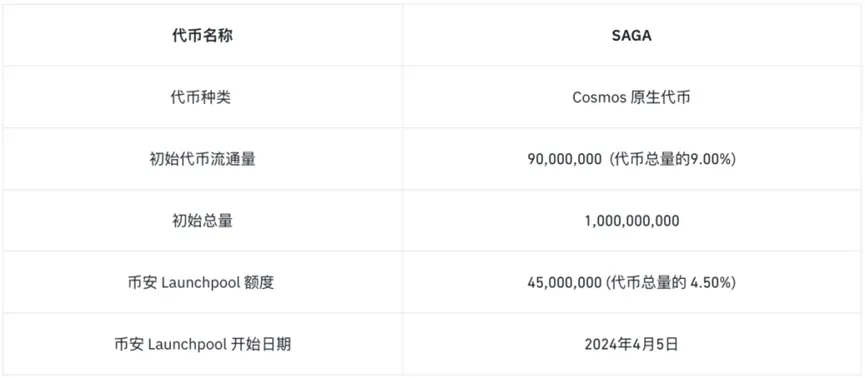
Among them, Binance's IEO accounts for 4.5%, meaning that Binance Launchpad accounts for 50% of the initial circulation.
SAGA tokens are primarily used in the following scenarios:
Payment for Chainlets: Developers pay SAGA tokens to network validators.
Staking: Stakers help protect the network and receive SAGA tokens and tokens from projects built on the Saga protocol as rewards.
Governance: SAGA token holders will be able to vote on network governance decisions.
6. Conclusion
In summary, as a modular one-click chain launch platform, Saga allows developers to establish a Chainlet by simply clicking a button in the Saga WebApp, significantly lowering the threshold for project parties to launch chains.
With the continuous development of blockchain technology, one-click chain launching is expected to become a major trend in the future. Compared to DApps, which often face many restrictions from public chain platforms (such as needing to use public chain platform tokens to pay gas), chains offer greater autonomy, allowing project parties to flexibly configure environments and customize business needs.
For example, the charging model of Chainlets can be more flexible, allowing the use of fiat currency, stablecoins, or even free options, increasingly resembling Web2's charging models.
Therefore, as the barriers to creating chains continue to lower, and with the significant advantages of chains over DApps, more developers are likely to choose the chain model for project creation rather than the DApp model.
If dYdX's migration from Ethereum to Cosmos, creating the dedicated dYdX Chain, marked the initial signs of this trend, then Saga's explosive growth will undoubtedly clarify this trend further.
Moreover, Saga not only aligns with the popular trend of modular blockchains but also closely fits with the GameFi sector, which is expected to explode in this bull market. Saga is poised to stand out in these two major fields and become a leader in industry development.
P.S This article does not constitute any investment advice.









